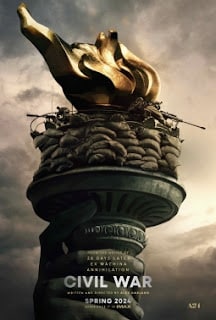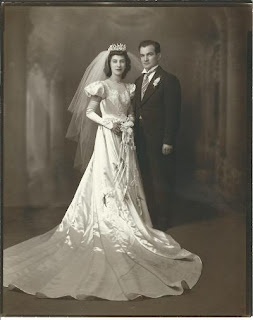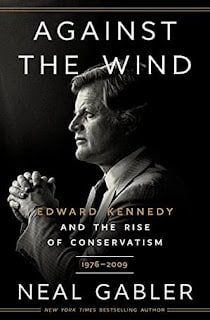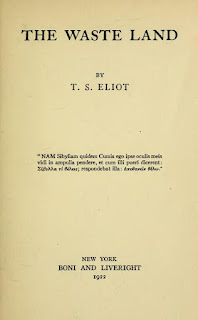The actual American Civil War officially began on this date in 1861, with the Confederate attack on Fort Sumter. Most of us have grown up with casual cultural assumptions about American democracy’s exceptionalism that have made it easy for us to normalize such conflicts in failed or failing states elsewhere but have made it comparably difficult for us to imagine that another such conflict could ever again occur in the United States. We instinctively assume that our stable political culture (and our antiquated constitution) could somehow protect us from intensifying democratic failure. Yet the fact that a real civil war did actually happen here once before should, however, disabuse us of such complacency.
Coincidentally, British filmmaker Alex Garland’s new film Civil War opens in theaters this week. Civil War, which premiered at South by Southwest last month, is set in a frightening, sometime future, failed-state U.S., as experienced on screen by a group of journalists covering the conflict (for Reuters) as civil war and seemingly random violence tear an increasingly dystopian U.S. apart. We seem intended to experience the conflict through the morally constricted world of journalism. The journalists in the film seem like otherwise normal people. However, one might suggest that, with civilization literally collapsing all around them, there might be more important priorities than getting a story and taking good pictures, but that seems somehow to elude them. Or perhaps it doesn’t, for they too are not immune from war’s personal toll.
Early on, we experience the confusion of a socially devastated New York, although the city’s infrastructure – or at least its skyline (necessary one supposes for on-screen recognition) – still seems somewhat intact. As in some real 20th-century wars, the journalists are based in a still somewhat functioning hotel, from which they set out with professional determination to Washington, DC. The conflict has apparently been underway for some unspecified amount of time, long enough to do obvious damage. Along the way, there are several dangerous encounters, but exactly with whom is not always quite clear. There are also amazing pockets of normalcy. Indeed, we are casually informed that the two female photojournalists have parents living complacently on farms in Missouri and Colorado respectively. And Canadian money is willingly accepted, which suggests that things may still be just fine north of the border. Meanwhile, the journalists eventually reach what appears to be the military frontline in Charlottesville VA, as the rebels prepare to advance on Washington, DC.
It remains unclear what the actual originating causes of the conflict were, when or why the war started, or even exactly who started it. The film’s emphasis is more on the ever-increasing violence, which is the consequence of political collapse. For context, however, we do discover that, what remains of the federal government (led by a suggestively somewhat Trump-like, authoritarian third-term president, who has disbanded the FBI) is apparently at war with two breakaway states, California and Texas, the so-called « Western Forces. » So there is both seemingly random (domestic terrorist?) violence all along the way, and then there is a full-scale military force ready to do battle against whatever is left of the United States. Shaken by what they have experienced and by their personal losses, but with a certain journalistic insouciance, the press crew attaches itself to the Western Forces for the final assault on the White House. (One of the traditional arguments against the possibility of an old-fashioned « civil war » happening again in the U.S. was that the federal government has such an overwhelming monopoly of military power. Yet, one of the unexplained oddities of this film is the almost complete absence of massive military power on the federal side and the impressive display of massive military hardware in the part of the secessionists!)
Most people probably find the idea of a California-Texas alliance somewhat implausible, as indeed most Americans must find the idea of an actual armed conflict or « civil war » among Americans itself implausible. But the film seems to want to take us sufficiently out of our immediate present in order to capture the character of a potentially looming American breakup, without necessarily identifying too closely or clearly with contemporary political divisions. The allegory is there for all to see, but general enough to be appreciated beyond the narrow confines of our contemporary tribal affiliations. The through-line, if you will, that connects our present epidemic of extreme polarization and the America depicted in the film may not be any particular political positions or ideologies as much as what seems to be the extreme mutual desire of each side to obliterate the other, the phenomenon known as « negative polarization. »
The allegory works, however, precisely because it is just plausible enough. Underlying the dramatic depictions of a violent, failed state is the specter of actual American democracy’s real potential for failure, as it appears to follow the classical trajectory into dysfunctional tyranny. « One of the most striking facts about the political world of the third millennium, » Sheldon Wolin observed twenty years ago, « is the near universal acclaim accorded democracy » and democracy’s novel status as « a transhistorical and universal value. » [Politics and Vision: Continuity and Innovation in Western Political Thought, expanded ed. (2004) p. 585]. Obviously, modern democracy is not the same as the earlier democracies consistently condemned and feared by classical and early modern political theorists, from Plato and Aristotle to the American founders. Yet, it resembles its ancient namesake enough to suffer from similar disabilities, despite our era’s distorted image of democracy’s possibilities and liabilities, with the result that those ancient and early modern warnings remain relevant even in the third millennium.




